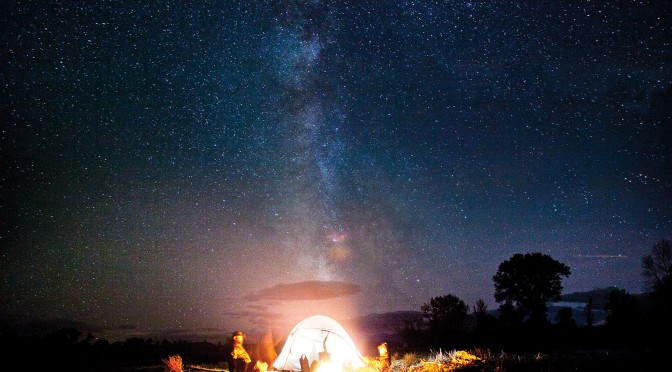by Ian Roderer
There’s something deeply fulfilling about spending a night out in nature, which few other experiences can equal. It’s an outdoor pastime that is nearly accessible to anyone and beloved by people from all walks of life—how hard can it be? Turns out, there are a few tricks to help ensure that you’ll be itching to get back out there after your next outing.
Where to Go
Public land abounds here in Montana, and with so many options, a place to sleep outdoors is always close at hand. If you’re new to camping, start by checking out developed sites in state parks, national forests, and national parks. Since these sites typically have toilets, picnic tables, and fire pits, all you need to do is find the campground and pitch your tent. Get started finding and reserving sites at recreation.gov. Once you’ve mastered the basics, look into BLM land, or check out a Wilderness area.
Around Bozeman, Hyalite has a variety of developed and undeveloped drive-up sites, along with ample places to hike into for the night. Nearby state parks such as Lewis & Clark Caverns and Missouri Headwaters have developed sites for a small fee. If you’re a parent, do a test run in the back yard where the comforts of home are close by. The kids will love it just as much as they’ll love camping in the woods once you get everything dialed in.
Gear
Camping gear runs the gamut, from makeshift and rudimentary, to the fanciest new tech. The bottom line is you don’t need specialized gear to have a great time camping, and it doesn’t have to break the bank. If you decide on backpacking, things can get more complicated, but there are affordable ways to do it. For tips on gear deals, see p. 26.
Start by packing everything and whittling it down as you gain experience. Food is a personal preference. Some people go all-out with a grill and a feast, while others grab a loaf of bread and a jar of peanut butter and call it good. Pack extra snacks to ensure you have adequate calories. For water, pick up a five-gallon jug or two and fill up before you leave home.
Don’t forget the essentials: a headlamp and extra batteries, a hat and gloves for chilly nights, and spare socks.
Safety Issues
Camping is a great way to experience Montana’s renowned wildlife. Just remember, you’re in their space and your actions affect them. Be bear aware, and always follow food-storage rules for the area. Learn how to hang a bear bag and store all food in your car, never in your tent. Some campgrounds even have bear lockers—use them. Enjoy the wildlife, just do it from a safe distance.
Summers here are often dry, and water sources can vanish by the end of the season. Summer also comes with increased fire danger, so stay current on all regional fire restrictions. Shoulder seasons can offer prime camping conditions, but expect fluctuations in weather and temperature.
Be prepared and plan for things to go wrong. More often than not, gear malfunctions, bad weather, full campsites, and a laundry list of other potential challenges await on any camping excursion. Arm yourself with enough knowledge to keep the bad from becoming worse (for more on outdoor education, see p. 22; and for safety tips see p. 24). Work through the difficulties and remember that adversity and adventure are good for the soul. Many of my favorite camping memories involve things going wrong, and these trials make for great campfire stories on future outings.

